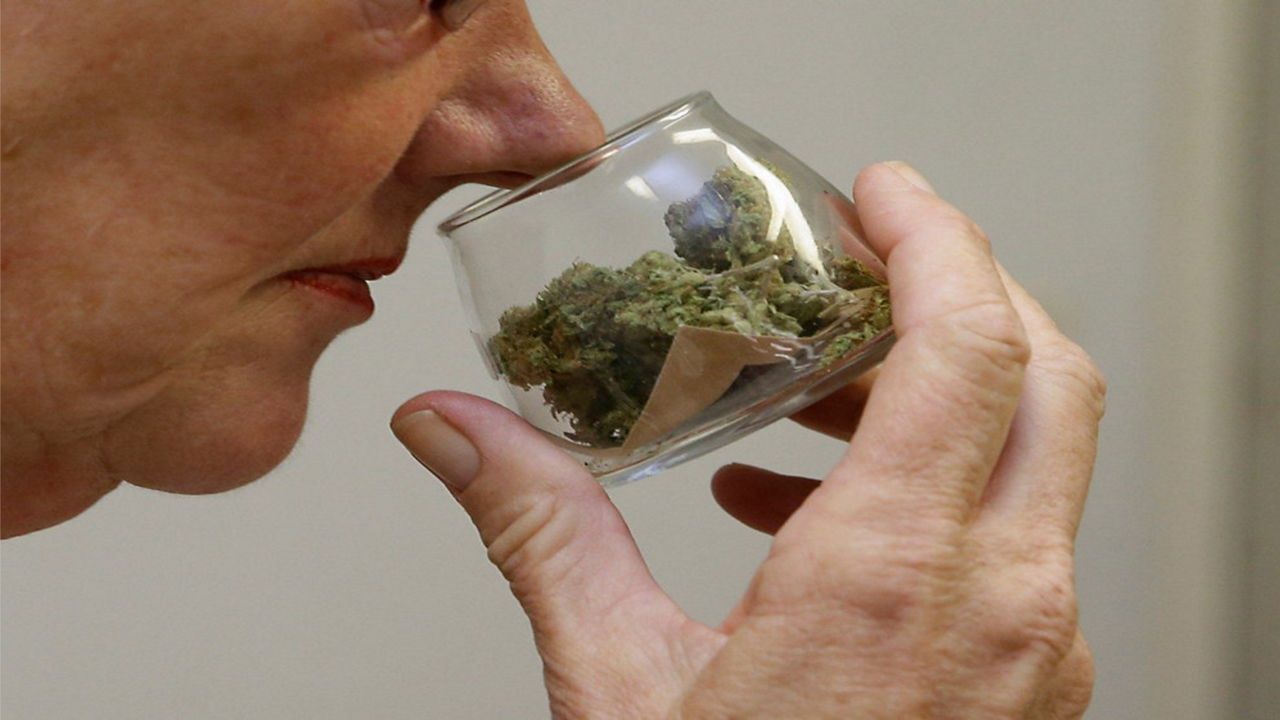Why It Works
- Using parboiled rice shortens the cooking time and ensures grains cook up fluffy, not sticky.
- Cooking the beans and meat with the rice infuses flavor into every grain.
There are a lot of stories behind Hoppin’ John, and probably even more versions of the recipe. I grew up in the Deep South, where Hoppin’ John—a dish made with rice and peas—was always served on New Year’s Day alongside our greens and cornbread. But it wasn’t relegated to just that one day of the year.
While Hoppin’ John was meant to bring prosperity and good luck for the New Year, one-pot rice dishes made with just about anything were a part of the table on a regular basis, and cowpeas of all sorts were always in our diets. I didn’t find out until I got much older that cowpeas aren’t familiar to most people outside of the Deep South. It also wasn’t until I got older that I realized the Hoppin’ John I grew up eating and what other people call Hoppin’ John are vastly different.
Hoppin’ John Variations
Not only had I never had the dish made with the black-eyed peas many use, but I’d never had it not made with the rice, meat, and peas all cooked together. Plain boiled rice with peas on top was just…rice with peas on top, and mixing them in together after the fact just seemed like it defeated the purpose of making them separately.
I’d also noticed that we—people from the Low Countries of Georgia, South Carolina, and other nearby areas—made rice that had more color to it because we used field peas to make our Hoppin’ John. Often called “Southern peas,” field peas are black-eyed peas’ close cousins; both are types of cowpeas, though the naming and classification can get confusing since different regions use the terms differently, and frequently interchangeably.
But to me, they aren’t all the same. The brownish red skins of the field peas I grew up with provide a beautiful almost ruddy color to the rice, and their flavor is a bit sweeter and more nutty than that of black-eyed peas. Cooking them all together with a flavorful broth made from smoked meat and aromatics imparts impactful taste into whatever long grain white rice you choose to use.
It took some time for me to learn there was a reason why most people now use black-eyed peas instead of field peas. During the Great Migration out of the Deep South by Black folks, people still carried their traditions, even when they couldn’t carry the ingredients. Cowpeas of all shapes, sizes, and colors are found across the country, but these very specific field peas were only found in the South. So when the people moved, they adapted and used a different, although familiar, replacement in the form of the black-eyed pea.
Over the years, I’ve seen other adaptations, in which people make the classic dish their own way to fit their lifestyle. Some people swear by bacon in their Hoppin’ John, and while I don’t feel it’s necessary given the smoked meat already in there, you should feel free to add some rendered crispy bacon at the end while you fluff the rice, so that a bit of its crunchy texture remains. Or you can use bacon in place of the smoked ham hock called for in the recipe, or add them both together! I didn’t grow up eating much or any pork at all, so we used smoked turkey (necks, tails, wings, whatever you could find) instead of the ham hock or salt pork often found in recipes, and we’d add beef bacon (or no bacon at all) instead.
I’ve even seen vegetarian versions done that don’t include any smoked meat at all, and instead the the grains and legumes get their flavor from simmering the peas in vegetable broth.
Slow Cooking the Meat
My recipe starts by slow cooking the smoked meat in water so that it falls apart tender and leaves a broth that is not only deep and rich, but will make your entire house smell great. Then I cook the peas in that same broth with only a few seasonings and spices. The final step is adding parboiled rice and cooking the dish in the oven until the rice is fluffy, each grain dry enough to keep all the ingredients separate but still tender.
Choosing Your Rice
Even I haven’t mastered the art of making Hoppin’ John with the traditional Carolina Gold rice, which needs to be cooked differently than your average medium- or long-grain rice you find in the stores. I’ve found parboiled rice is one of the best options for fluffy grains that are tender but still dry enough not to glue together.
Oven vs. Stovetop
To that end, I also use the oven for the final stage of cooking. Even after years of practice, I still can’t reliably do the entire process on the stovetop, where my rice sometimes turns to mush—something I am sure many, many grannies and aunties would shamefully shake their heads at me for. The oven, thankfully, delivers a more gentle heat that cooks the rice through from all sides without the risk of scorching or requiring any stirring or overcooking that could release starch and push the Hoppin’ John in the direction of what we call a “bog.” It also steers the rice clear of developing a soupy or risotto-like consistency where the grains are more wet and more liquid is left in the pot.
This recipe feeds six to eight people easily, and while it could be scaled down, it is a dish usually served with friends and family, especially during the holidays. The more you make (and eat), the more prosperity you’ll have in the New Year.
December 2020
Cook Mode
(Keep screen awake)
-
1 smoked ham hock (about 1 1/4 pounds; 565g)
-
1 medium (8-ounce; 225g) yellow onion, peeled, quartered, and root end trimmed
-
2 bay leaves
-
1 1/2 cups (9 1/2 ounces; 270g) dried field peas (cowpeas), preferably not black-eyed peas, rinsed, picked over for debris, and soaked overnight (see notes)
-
1 tablespoon Diamond Crystal kosher salt (12g); for table salt use half as much by volume or the same weight
-
1/2 teaspoon freshly ground black pepper
-
1 teaspoon garlic powder
-
1 teaspoon onion powder
-
1 1/2 cups (10 ounces; 280g) uncooked parboiled long-grain white rice (see notes)
-
In a 5-quart Dutch oven, combine ham hock, bay leaves, and quartered onion, and top with 3 quarts of water. Set over high heat, bring to a boil, then cook at a boil for 5 minutes. Reduce heat to maintain a gentle boil, cover with the lid slightly ajar, and cook until the ham hock is fork-tender, about 3 hours; top up with boiling water as needed to keep the ham hock covered. Discard bay leaves. Transfer ham hock and onion to a heatproof plate or bowl to cool. Measure 2 quarts (1.9L) broth and return it to the Dutch oven; save any remaining broth for another use.
Serious Eats / Jillian Atkinson
-
Pull ham hock meat and skin from the bones. Roughly chop up any larger pieces, then return meat, skin, and bones along with the onion to the pot.
Serious Eats / Jillian Atkinson
-
Drain field peas from soaking water, rinse, and add to the pot.
Serious Eats / Jillian Atkinson
-
Add salt, pepper, garlic powder, and onion powder. Set over high heat and return to a boil. Lower heat to maintain a gentle boil, cover with the lid slightly ajar, and cook until peas are al dente, about 45 minutes. About 15 minutes before peas are al dente, preheat oven to 350°F (175°C). Add parboiled rice to pot, stir to combine, then return to a full boil over high heat and cook for 1 minute, then turn off heat.
Serious Eats / Jillian Atkinson
-
Stir the pot well to incorporate the ingredients, cover fully with lid, and cook in oven for 30 minutes. Remove from the oven and let rest, covered, for 5 minutes.
Serious Eats / Jillian Atkinson
-
Fluff with a fork, and serve right away.
Serious Eats / Jillian Atkinson
Special Equipment
Dutch oven
Notes
There are many sources for field peas, but two good options available online are the ones from Anson Mills and Camellia. We recommend soaking beans in water salted with 1 tablespoon of kosher salt per quart. Also please note that parboiled long-grain rice is a specific rice product available at grocers and supermarkets everywhere; you can not substitute other kinds of rice for it, nor attempt to parboil your own.
Make-Ahead and Storage
Hoppin’ John can be refrigerated in an airtight container for up to 5 days. Reheat in an oven-safe dish, covered, in a 325°F oven until warmed through.









:max_bytes(150000):strip_icc()/__opt__aboutcom__coeus__resources__content_migration__serious_eats__seriouseats.com__2020__12__20201214-hoppin-john-jillian-atkinson-10-90e193c0d36f4864a726ebe579aa43fc.jpg)





